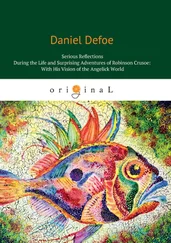walking, 55–56. See also mindfulness meditation
meditation circuit training, 72, 73
meditation progress: consolidation stage of, 76–77
initial access stage of, 76
Meditations (Marcus Aurelius), 109
Meng’s magic mushroom mantra, 227
“mesching,” 124
meta-attention: bicycle riding analogy of concentration for, 31
definition of, 30
mindfulness role of, 30–31. See also attention
meta-conversation: formal practice of empathic listening, 182
informal practice of empathic listening, 183–84
“meta-distress,” 111–12
metaphors: happiness and deep ocean, 148
“like writing on water,” 106–7
riding a horse, 103–4. See also analogies
MetLife, 153
Metta Bhavana (Loving Kindness Meditation), 169–70, 172–73
microexpressions, 2
Microsoft, 132, 152
military leadership, 14, 15, 194
Mindful Conversation exercise, 60–64, 180–84
mindful e-mailing, 224–26
Mindful Listening exercise, 57–60, 140–41
mindfulness: alignment built on self-awareness and, 139–40
cultivating emotional intelligence from, 25
defined as paying attention, 20, 26, 30, 51–52
Easy Way and Easier Way to experience, 26–27, 44
empathic listening and role of, 182
getting there in two minutes, 25–27
joyful, 70–71, 87
learning optimism and role of, 154
meta-attention role in, 30–31
moving toward emotional intelligence through, 25
sitting time for, 44–46
study on psoriasis and, 50. See also mindfulness practice
Mindfulness-Based Stress Reduction (MBSR), 47, 91, 94, 109
mindfulness meditation: being aware of your attitude toward self, 36, 38
distraction and, 36, 38
follow your breath step of, 36, 37, 39
gathering your attention for, 36, 37–38
intention starting process of, 35–37
practicing the, 45–46
Process Model of Mindfulness Meditation for, 36–39
regain attentional focus step of, 36, 38
sitting time for, 44–46. See also meditation
mindfulness practice: generalized into your life, 53
integrating in daily life activities, 54–56
mindful conversation, 60–64, 180–84
other-directed mindfulness to benefit others, 57–60, 181
sustaining your, 65–67. See also mindfulness
Mingyur Rinpoche, 67, 82, 127, 128, 149, 197
mirror neurons, 160–61
monetary incentives research, 138–39
monkey and mirror neurons study, 160–61
mother-in-law story, 121–22
motivation: alignment practice of, 133, 134–41
autonomy, mastery, and purpose elements of, 136–39
Duncker’s candle problem and, 137–39
envisioning practice for, 132, 141–47
learning optimism and unlearning pessimism for, 153–55
resilience practice for, 134, 147–53
mountain position, 40–41
MPFC (medial prefrontal cortex), 21
MRI (magnetic resonance imaging), 19
Mueller, Claudia, 185
multiple intelligences theory, 11
Multiplying Goodness Meditation, 203–5, 210
Myhrvold, Nathan, 152
“My Monsters” (Tan), 128–29
negative emotions: marriage success and ratio of positive vs., 211–12
Siberian North Railroad practice of managing, 119–20
neural model of emotion regulation, 114–15
neuroplasticity, 18–19
New York Times , 133
“Nice Guys Finish First” study, 14
Obama, Barack, 84
Ochsner, Kevin, 122
O-nami (Great Waves) story, 155–56
one breath a day practice, 67
open attention, 71–75
open awareness, 198
optimism, 153–55
optimize yourself, 17
other-directed mindfulness, 57–60
Pabon, Blaise, 5
pain: brain’s “pain matrix” response to, 161
do not feed the monsters causing, 110, 112–13
knowing when you are not in, 110, 111
“meta-distress” reaction to, 110, 111–12
pain without suffering insight, 107–10
Pally, Regina, 141–42
passion (“flow”), 132, 135–36
Pennebaker, James, 96, 97
pessimism, 153–55
physical exercise analogy of meditation, 33–35
Pink, Daniel, 136, 137
pleasure, 132, 133
political awareness skills: description of, 186–87
Political Awareness exercise for, 188
practices for, 187–90
positive emotion, 93
Posner, Barry, 193–94
posture, 39–41
pot of water analogy, 31–32
praising authentically, 184–86
problem solving, 221
Process Model of Mindfulness Meditation: being aware of your attitude toward self, 36, 38
distraction and, 36, 38
follow your breath step of, 36, 37, 39
gathering your attention for, 36, 37–38
illustrated graphic of, 36
intention starting process of, 35–37
regain attentional focus step of, 36, 38
psoriasis-mindfulness study, 50
psychologizing, 164–65
purpose, 137–39
Reeves, Keanu, 22
reframing meaning of situation, 123, 124
regain attentional focus, 36, 38
relatedness (SCARF model), 213–14
relationships: using kindness to grow friendship out of ugly situation, 195–97
Loving Kindness practice to save your, 169–71
practicing kindness in your, 110, 113–14, 166, 169–71. See also friendship
marriage
relaxation: as foundation of deep concentration, 69
“Goldilocks zone” of, 74
resilience: cognitive, 147, 151–53
definition of, 134
emotional, 147, 148–49
inner calm training for, 147, 148, 149–51
overcoming fear of failure through inner, 155–56
“response flexibility,” 20
Reward (Approach) and Thread (Avoid) principle, 210–11
Ricard, Matthieu: friendship with, 146
happiness and compassion of, 1–2, 15, 197–98, 240
on his own state of happiness, 148, 198
riding a horse metaphor, 103–4
rtfMRI (real-time functional magnetic resonance imaging), 19
Rumi, 127–28
RVLPFC (right ventrolateral prefrontal cortex), 21
sacred pause, 117
Salovey, Peter, 10, 11
sati (recollection), 225
Savage, Roz, 142–43
saving the world, 240–41
SCARF model: expanding your influence through the, 215–17
five domains of social experience, 212–15
Schmidt, Eric, 225
science: of meditation, 1, 47–50, 232–33
spirit of inquiry of meditation and, 46–47
Search Inside Yourself (SIY): cultivating emotional intelligence focus of, 17–19
mindfulness-based emotional intelligence curriculum of, 3, 236–37
professional and personal outcomes of, 5–6, 237
three steps of, 7–8
why it is taught by an engineer, 3–5
Search Inside Yourself steps: step 1: attention training, 7
step 2: self-knowledge and self-mastery, 7
step 3: creating useful mental habits, 7–8
self-awareness: alignment as built upon, 139–40
competencies of, 82–88
definition of, 11, 81, 89
developing, 89–95
Ebenezer Scrooge (A Christmas Carol character) search for, 11–12
fluttering flag on a flagpole analogy of, 89–90
journaling in order to achieve, 95–99
as key domain of emotional intelligence, 11, 81–82
relationship between empathy and, 162–63
that you are not your emotions, 100–101
self-awareness development: body scan practice for, 91–95
journaling for, 95–99
self-awareness emotional competencies: accurate self-assessment, 82, 83–84, 87–88
emotional awareness, 82–83, 88
linear relationship between the three, 88
self-confidence, 82, 84–85, 88
self-confidence: developing, 82, 84–85, 88
Читать дальше
Конец ознакомительного отрывка
Купить книгу







![Chade-Meng Tan - Search Inside Yourself - Increase Productivity, Creativity and Happiness [ePub edition]](/books/703803/chade-thumb.webp)



